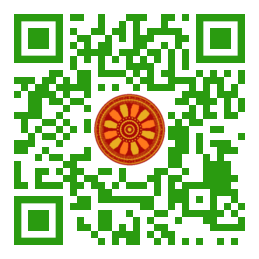
:: International Transaction Journal of Engineering, Management, & Applied Sciences & Technologies
http://TuEngr.com

ISSN 2228-9860
eISSN 1906-9642
CODEN: ITJEA8
FEATURE PEER-REVIEWED ARTICLE
Vol.15(1)(2024) |
Space Syntax Analysis on a Nursing Home of Soelund Urban Nursing Home in Denmark
 Ying Ling Ng (School of Housing, Building and Planning, Universiti Sains Malaysia, MALAYSIA),
Ying Ling Ng (School of Housing, Building and Planning, Universiti Sains Malaysia, MALAYSIA),
Yasser Arab (Department of Architectural Engineering, Dhofar University, Salalah, SULTANATE of OMAN),
Ahmad Sanusi Hassan (School of Housing, Building and Planning, Universiti Sains Malaysia, MALAYSIA),
Hilary Omatule Onubi (School of Housing, Building and Planning, Universiti Sains Malaysia, MALAYSIA), and
Maryam Saeed (Department of Architectural Engineering, Dhofar University, Salalah, SULTANATE of OMAN).
Discipline: Architectural Engineering.
Keywords: Spatial configuration; Long-term care facility; Care home; Wayfinding analysis, Permeability; Semi-public space; Space social logic; Private space; Social space; Space planning; Community engagement.
AbstractDeinstitutionalizing nursing homes requires effort from an architectural aspect to improve the quality of life for the elderly. One of the methods is to add social spaces and encourage community interaction with the elderly. In this paper, the logic of space is studied based on a case study using space syntax to analyze wayfinding and space permeability. The case study selected is Soelund Nursing Home in Denmark. It is a pioneering example of a city-integrated care center with community involvement. The results show that semi-public spaces are prepared and separated from the private spaces, which are the nursing home's residence units. Wayfinding for the public on amenities and interaction space is easy but hard to reach residential units. This approach helps to maintain the privacy of the residence. Therefore, the case study has shown a good layout for creating a non-institutional nursing home with local residence involvement.Paper ID: 15A1F
Cite this article:
Ng, Y.L., Arab, Y., Hassan, A. S., Onubi, H. O., and Saeed, M. (2024). Space Syntax Analysis on a Nursing Home of Soelund Urban Nursing Home in Denmark. International Transaction Journal of Engineering, Management, & Applied Sciences & Technologies, 15(1), 15A1F, 1-14. http://TUENGR.COM/V15/15A1F.pdf DOI: 10.15456/ITJEMAST.2024.6
References
- Abu-Ghazzeh, T. (1996). Movement and Wayfinding in the King Sauf University Built Environment: A Look at Freshman Orientation and Environmental Information. Journal of Environmental Psychology, 16, 303-318.
- Abu-Obeid, N. (1998). Abstract and scenographic imagery: The effect of environmental form on wayfinding. Journal of Environmental Psychology, 18, 59-173.
- Andrade, C.C., Lima, M.L., Pereira, C.R., Fornara, F., & Bonaiuto, M. (2013). Inpatients' and outpatients' satisfaction: The mediating role of perceived quality of the physical and social environment. Health & Place, 21, 122-132.
- Dusun, P. (2007). Space Syntax in Architecture Design. 6th International Space Syntax Symposium (pp.01-56).
- Evangelia, C. (2019). Psychiatric Institutions and the Physical Environment: Combining Medical Architecture Methodologies and Architectural Morphology to Increase Our Understanding. Journal of Healthcare Engineering, Article ID 4076259.
- Gibson, Diane. (2001). Deinstitutionalisation: The move to community-based care. Australia's Welfare 2001, Chapter 4.
- Haq, S. & Luo, Y., 2012. Space Syntax in Healthcare facilities research: A review. Health Environments Research & Design Journal, 5(4), 98-117.
- Hassan, A. S. (2004). Issues in sustainable development of architecture in Malaysia. USM Press.
- Hillier, B., & Hanson, J. (1984). The Social Logic of Space. Cambridge, UK: Cambridge University Press.
- Kaup, M. (2007). Rethinking Nursing Home Architecture: Why Skilled Care Environments Don't Really Feel like Home (and What We Can Do About It). IDEC, 19(4), 196.
- Keysor, J., Jette, A., & Haley, S. (2005). Development of the home and community environment (HACE) instrument. Journal of Rehabilitation Medicine, 37(1), 37-44.
- Khan, N. (2013). Spatial correlates of patients' travel experience & satisfaction in hospital outpatient department. ARCC Architectural Research Conference, North Carolina, 699-705.
- Lim H.Y., Hassan, A.S., Arab, Y., Angood, R.S. (2019). Levels of Permeability and Wayfinding in Autism Institution. International Transaction Journal of Engineering Management Applied Science & Technologies. Paper ID: 10A14A.
- Ministry of Health Malaysia (MOH). (2011). Psychiatric and Mental Health Services Operational Policy. Medical Development Division Ministry of Health Malaysia. pp 67.
- Moller, C.F. (2016). Solund Urban Nursing Home. C.F. M?ller Architects. Retrieved December 2020, http://www.cfmoller.com/p/Soelund-urban-nursing-home-i3312.html
- Ostwald, M. J. (2011). The mathematics of spatial configuration: Revisiting, revising, and critiquing justified plan graph theory. Nexus Network Journal, 13(2), 445-470.
- Scher, P. (1996). Patient-Focused Architecture for Health Care in Arts for Health. Manchester Metropolitan University, Faculty of Art and Design, Manchester, UK.
- Zadeh, R.S., Shepley, M.M., & Waggener, L.T. (2012). Rethinking efficiency in acute care nursing units: Analysing nursing unit layout for improved spatial workflow. Health Environments Research & Design Journal, 6(1), 39-65.
Other issues:
Vol.14(1)(2023)
Vol.14(2)(2023)
Archives
Call-for-Papers
Call-for-Scientific PapersCall-for-Research Papers: ITJEMAST invites you to submit high quality papers for full peer-review and possible publication in areas pertaining engineering, science, management and technology, especially interdisciplinary/cross-disciplinary/multidisciplinary subjects.
To publish your work in the next available issue, your manuscripts together with copyright transfer document signed by all authors can be submitted via email to Editor @ TuEngr.com (please see all detail from Instructions for Authors)
Publication and peer-reviewed process:
After the peer-review process, articles will be on-line published in the available next issue. However, the International Transaction Journal of Engineering, Management, & Applied Sciences & Technologies cannot guarantee the exact publication time as the process may take longer time, subject to peer-review approval and adjustment of the submitted articles.